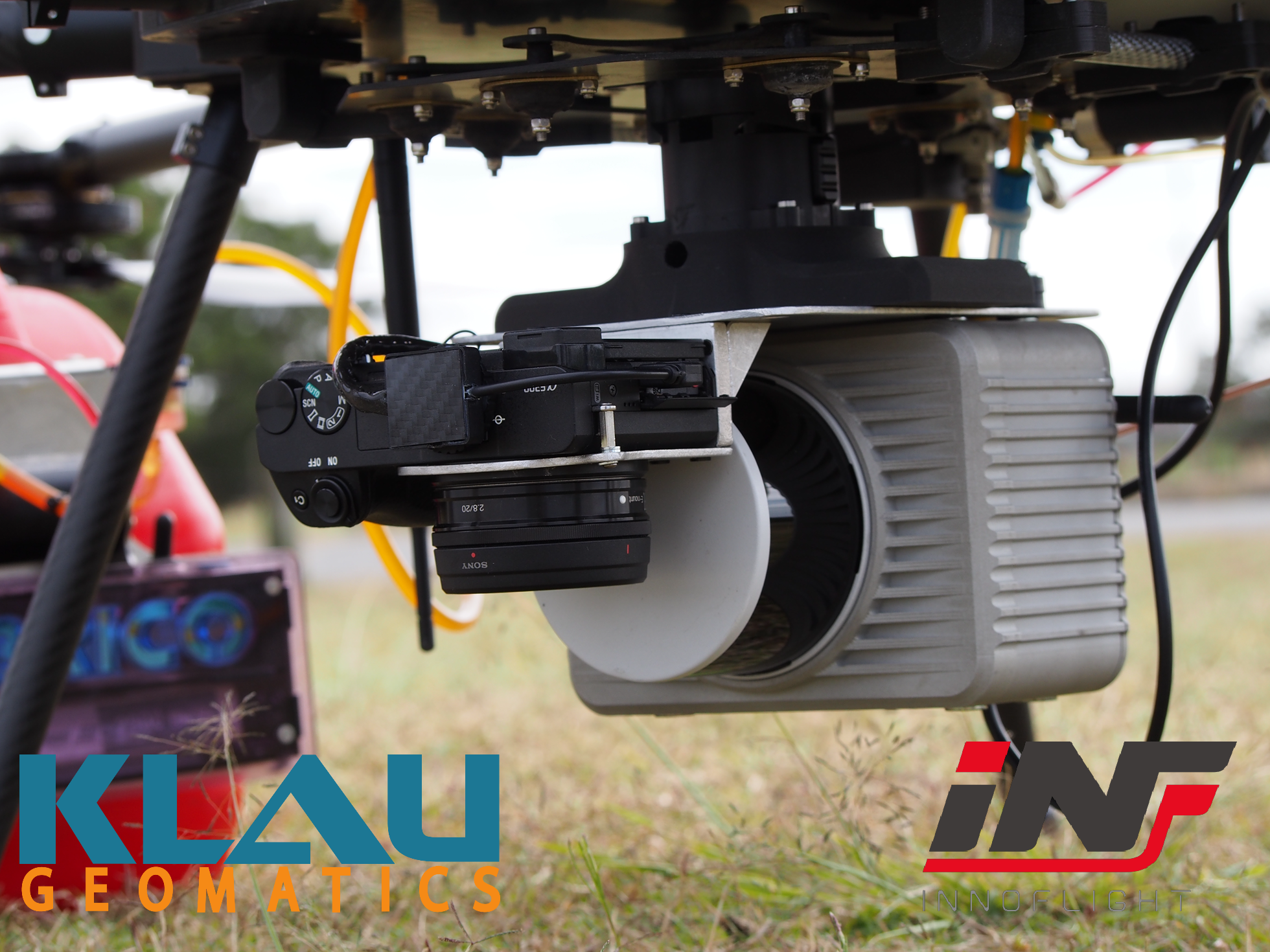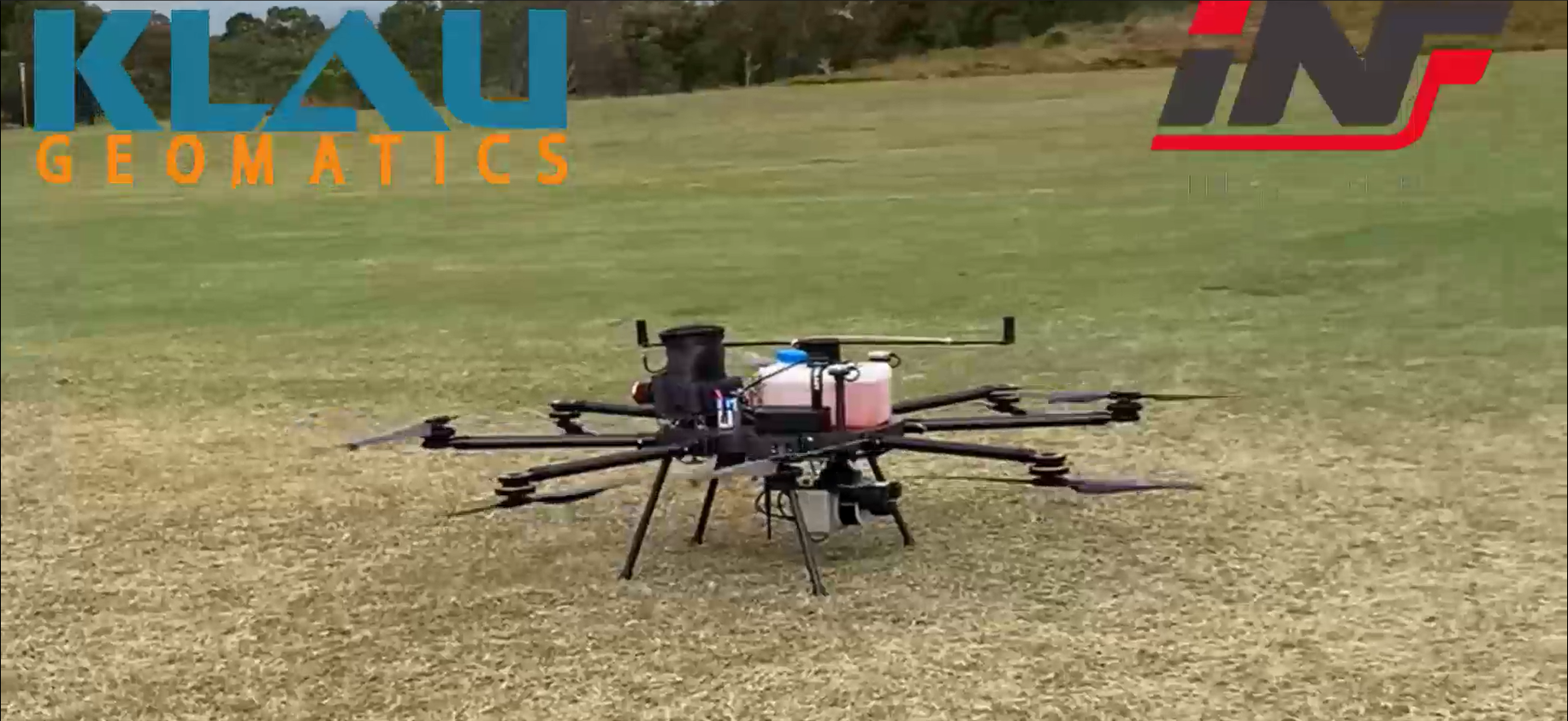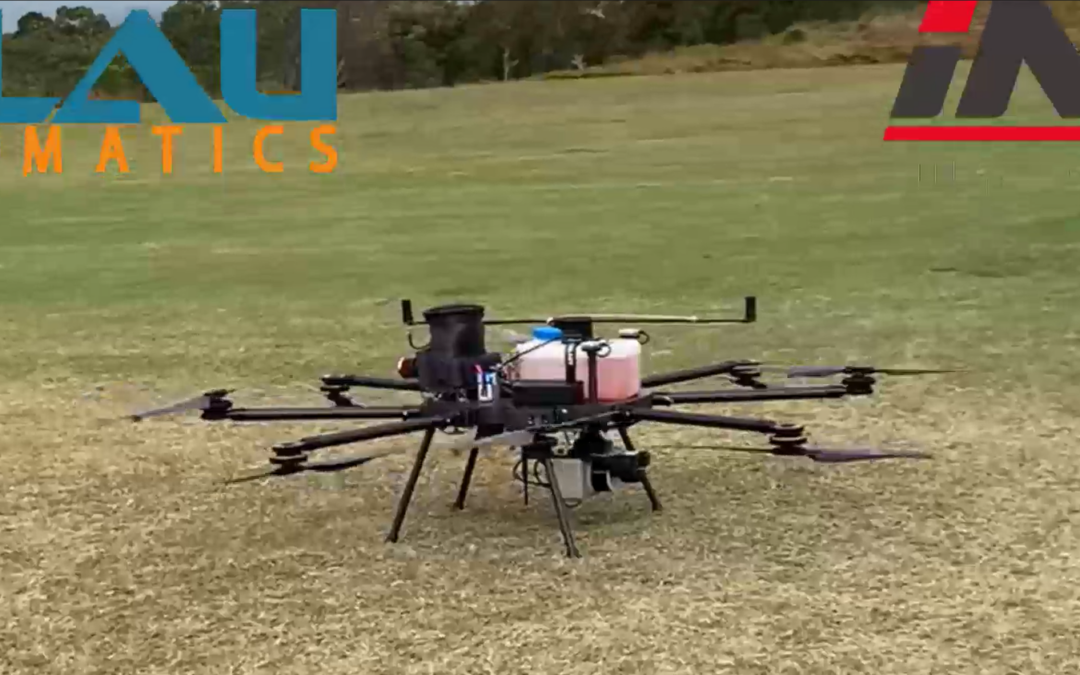The Edge Compute Brumby LiDAR is making waves in MLS, airborne geophysics and powerline scanning with its accuracy and minimal workflow. The data from the device is processed into an accurate georeferenced pointcloud in just minutes, removing the typical LiDAR Processing workflow log-jams.
Can it go on a drone? Why not. So, here it is on Innoflight International’s hybrid/electric octocopter– the ScanLift Orbit.
The ScanLift Orbit is INF’s new flagship aircraft designed to keep up with the latest in LiDAR payloads like the Brumby and to fill the gap between smaller UAV jobs and large manned aircraft jobs. With long endurance, heavy payload capability (up to 10kg) and extreme long-range capability, coupled with the Brumby LiDAR, the Orbit can capture an immense amount of data per flight at a fraction of the cost when compared to manned LiDAR operations. With up to 5hrs endurance (2.5h @ 7.5kg) the ScanLift Orbit excels in large data acquisitions and extended line of sight/BVLOS while still remaining under the CASA/FAA 25kg license class if needed (with up to a 7.5kg payload).
The ScanLift Orbit uses INF’s latest Electronic Fuel Injected iHE7 Hybrid-Electric Generator, this is the magic behind the long flight times including maintaining high safety margins with electric propulsion motor redundancy as well as engine failure redundancy (with up to 7 minutes reserve battery). “We are proud to have paired our cutting-edge Brumby LiDAR with the very latest in UAV technology” says Andrew Cottee, Innoflight Client Relationship Manager.

Brumby LiDAR with Sony camera under the InnoFlight petrol hybrid drone.
Fly the drone, download the data from the Brumby, run the Brumby Geo-referencer, and in minutes we have an accurate pointcloud. Processing typically takes just 25% of the time it took to fly the mission. With the capacity to fly for hours with the INF Scanlift Orbit, producing the data fast is essential.

Much of the data heavy lifting happens on the Brumby Edge Compute processor. In this case we used NTRIP RTK on two receivers, with NovAtel SPAN and ALIGN in the Kalman Filter INS computations. In remote areas, Terrastar-C Pro gives excellent results as an alternative to RTK.
The Brumby tech applies coordinate systems and a precise geoid model to the trajectory. The calibration for each install is retained in the system for georeferencing, and can be tweeked to tighten up the results.

Raw georeferenced pointcloud from the Brumby viewed in Cloud Compare minutes after the flight.
Currently the Brumby Georeferencer runs on a local computer, but is built to run on the device itself. We are close to releasing live georeferencing, remove the SSD drive and you have an accurate point cloud.
Some may want to reprocess the data, and all of the raw data and boresight calibration parameters are stored for each mission if you would like to post process.
But there are many cases where users what to see today’s pointcloud, not last week’s pointcloud after arduous post processing. Rapid data turnaround is key for daily mine site volume audits, defence applications, search and rescue, and situations where data is time-critical. They need fast accessible data, easily captured and delivered. Others would just rather not have to hire more people and buy more hardware and software to get to their pointclouds.
Please feel free to get in touch if you’d like more information. [email protected]
Rob Klau

